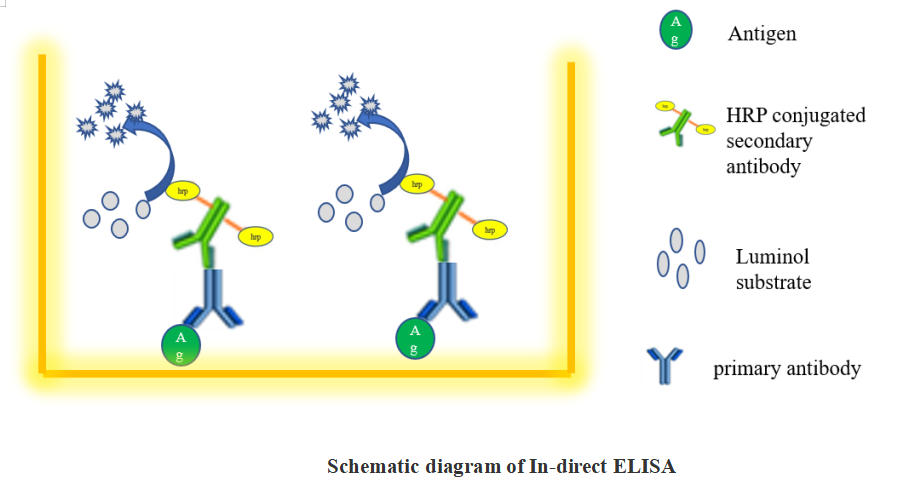What is Indirect ELISA
An indirect ELISA is one where the primary antigen-specific antibody is recognized by a secondary conjugated antibody. The strength of this method is that different secondary antibodies can be used that recognize all antibody isotypes or specific isotypes (e.g., IgG).
Coating antigen to the microplate
-
1. Coat the wells of a 96-well ELISA plate with purified antigen by pipetting 100 µL of purified protein antigen (1ug/mL in PBS) into each well of the plate.
-
2. Cover the plate with an adhesive cover and incubate it overnight at 4°C to allow the antigen to bind to the plate.
-
3. Upon incubation completion, remove the coating solution by flicking the plate over a sink.
Blocking
-
4. Block the remaining protein-binding sites in the coated wells by adding 100 µL blocking buffer (1% BSA in PBS) per well.
-
5. Incubate 1 hours at 37ºC.
-
6. Following the incubation, remove the blocking buffer by flicking the plate and then wash plate with wash buffer.
Incubation with the primary antibody
-
7. Prepare a serial dilution of the serum sample (which contains the primary antibody) or the primary antibody, to obtain a dilution range of 1 to 204,800, using 1X PBS.
-
8. Add 100 µL of the serially-diluted serum samples to the wells.
-
9. Cover plate with adhesive cover and incubate at 37ºC for 1 hours.
-
10. Following the incubation, flick the plate over a sink and wash plate with wash buffer.
Incubation with the secondary antibody
-
11. Add 100 µL of an enzyme-conjugated (HRP-conjugated) secondary antibody to each well.
-
12. Incubate the plate for 1 hour at 37ºC.
-
13. Following the incubation, flick the plate over a sink and then wash plate with PBS containing 1% Tween-20.
Detection
-
14. Add 100 µL of the indicator substrate (3,3',5,5'-tetramethylbenzidine (TMB)) at a concentration of 1 mg/mL to each well.
-
15. Incubate the plate with the substrate for 5-10 min at room temperature.
-
16. After 10 min, stop the enzymatic reaction by adding 100 µL 1M Sulfuric acid (H2SO4).
Within 30 min of adding the stop solution, read the plate using a microplate reader at 450 nm to determine the absorbance of the wells.







 Guidence of GeneMedi's protocol / procedure for the diagnostics application:
Guidence of GeneMedi's protocol / procedure for the diagnostics application: 